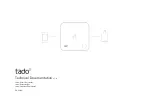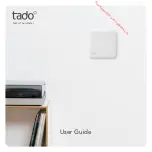
- -
26
The display shows on the left the current pH measurement value according to current calibra-
tion. The buffer value compensated for temperature is displayed in the center.
The detected and temperature compensated buffer value, shown in the center, can be modified
using the arrows
and
.
6.
To proceed with the calibration press
F2 = CAL
. The offset and gain calibration and the elec-
trode efficiency are displayed.
The blinking arrow changes to
;
to indicate that the current value has been accepted. The
blinking means the instrument is still in calibration mode. By pressing F2 = CAL again, it is
possible to repeat the calibration from the last point to obtain a finer calibration.
7.
Extract the electrode from the buffer, wash it, clean it carefully, and insert it in the following
buffer.
8.
The instrument shows the new buffer value with the blinking arrow.
The previous calibration
point is captured permanently
: The blinking
;
, becomes still.
9.
Continue with other calibration points, by repeating the steps from point 6.
10.
To end the electrode calibration, press
F3 = EXIT
.
NOTES:
•
By accessing the pH calibration, the previous calibration information are transferred in the
“pH Electrode Calibration History”. The current offset and slope values are set to nominal
values: The offset = 0mV, the gain varies according to the measured temperature
(59.16mV/pH at 25°C).
You should perform a new calibration.
•
If an error is made during calibration, you can press F1 = RESET to restart with a new calibra-
tion.
•
The instrument is provided with a measurement stability control system: Until the reading is not
sufficiently stable, the F2 = CAL key is disabled. Instead, the WAIT message is displayed.
•
When choosing the standard buffer (see the MENU), you can disable one by selecting
NIL
. In
this case, the buffer is excluded from the sequence, and won’t be proposed during calibration.
•
If the buffer value is rejected because it is considered to be excessively corrupted, the “
Buffer
value out of limits!
”
message will appear. The instrument waits for a valid buffer. If it is not
available, press F1=RESET to restore the initial calibration and exit using F3=EXIT. Repeat the
calibration as soon as possible.
•
During calibration, the instrument evaluates the electrode efficiency: If the correction is exces-
sive, the electrode symbol is replaced by “ERROR”. If you confirm the calibration anyway, the
electrode symbol blinks during measurement to remind you that you should replace it as soon as
possible.
Summary of Contents for HD2205.2
Page 78: ...78...
















































